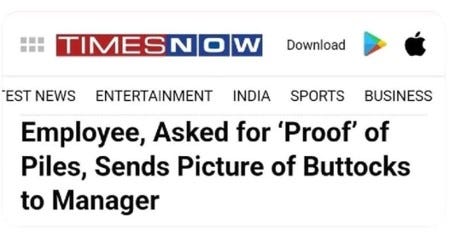An earlier edition was sent out with some formatting issues. We apologize for the inconvenience.
“Buy the dip” - Famous Wall Street quote
But what about people who really really want to dip? Prayagraj is hosting the Maha Kumbh Mela which marks the completion of 12 Kumbh Mela cycles, making it a once-in-144-years event - we are fairly certain there is no one alive who could say they were at the previous one. It is estimated to draw approximately 400 million visitors, some including the widow of Steve Jobs - Laurane Powell. A letter written by Steve Jobs where he aspired to visit India during the Kumbh Mela sold for a whopping 4.32 crores and Laurane decided to visit the Mela this year.
This week’s newsletter we take a look at some interesting facts from the Kumbh Mela.
Things We Learnt This Week:
At the 2013 Kumbh Mela, amidst the sea of pilgrims, Hindustan Unilever decided to play a cheeky game of "Have you washed your hands?" with 100 million people. Their weapon of choice - Roti. Turning flatbread to flat-out great advertising. Pilgrims were biting into their lunch, only to be interrogated with a simple question - Lifebuoy se Haath Dhoya Kya? With the precision of a military operation, they deployed 100 promoters armed with heat stamps to over 100 kitchens. Over 30 days, they branded 2.5 million rotis with their soapy message. This bonkers campaign reached over 5 million visitors, proving that sometimes the best way to a person's hygiene habits is through their stomach. Talk about being kneady!
One of India’s great institutes of eminence - the Banaras Hindu University owes its origin to the Kumbh Mela. Darbhanga King Kameshwar Singh, had the foresight to envision a Hindu university in Kashi. He wasn’t alone in his academic dreams – Annie Besant, the champion of education, had already set up the Central Hindu School in 1896. Madan Mohan Malviya got drafted into this team and in 1906 Kumbh Mela, the Sanatan Dharam Sabha passed a resolution to start the fabled Banaras Hindu University under Pandit Madan Mohan Malaviya’s leadership. But, as is often the case, it wasn’t all smooth sailing. The government had to step in, with a hefty donation of a crore. But by 1915, the funds were finally secured, and the Banaras Hindu University was officially born. Wash away ignorance and get educated!
The Kumbh Mela and the 1857 Rebellion share an unexpected connection. In the mid-19th century, the British introduced a Pilgrim Tax to profit from the large gatherings of people attending religious events like the Kumbh Mela. The Pragwal priests, who played a key role in organizing these events, strongly opposed this tax. They became active participants in the First War of Indian Independence in 1857 as they spread anti-British sentiment and even destroyed British mission presses and churches. In response, British forces led by Colonel Neill retaliated and suppressed the rebellion. However, they remained defiant and by 1859, they organized a smaller version of the Magh Mela and, in 1860, they even displayed anti-British flags at the Mela, despite the British military presence nearby. Interestingly, prior to the 1860s, the British records do not mention the "Kumbh Mela" at all and the very first mention of the word “Kumbh” seems to be from 1870, when the Magh Mela that year was called Kumbh!
From IWTK with love:
India’s first open quiz was probably held in Pakistan! https://www.instagram.com/p/DEucFvXoNrX/
Have you heard of the AIB curse? https://www.instagram.com/p/DEpQqB-SCdS/
Only in India:
As some quizmasters say, nice crack!
💟 IWTK








